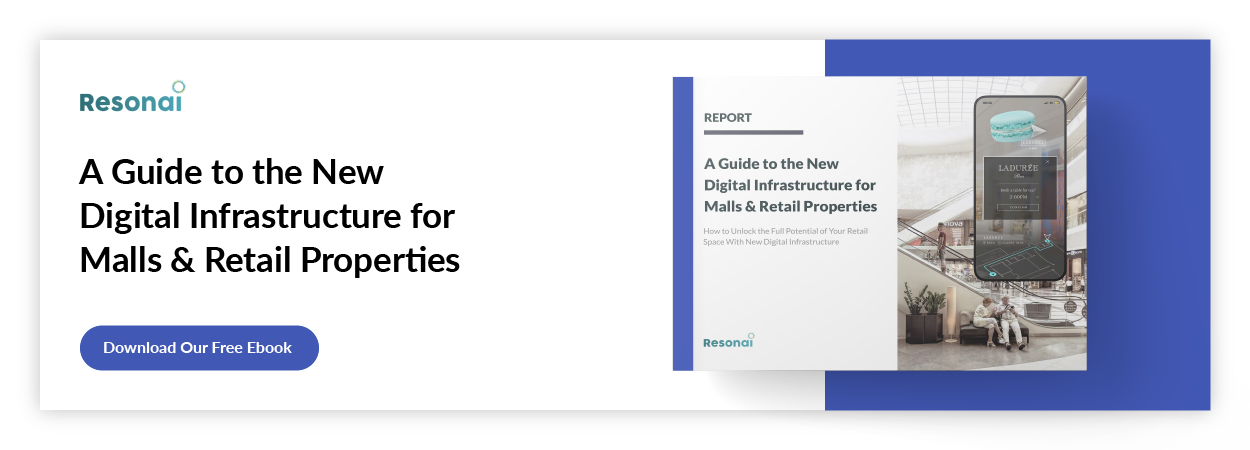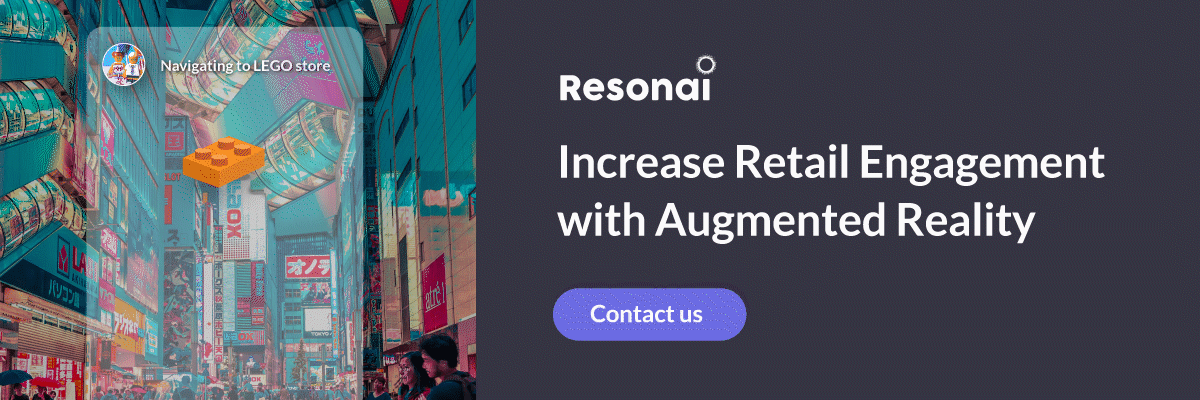The Planner’s Guide to Mall Design
Shopping malls are making a comeback, but they may not look like they used to

In the aftermath of the COVID-19 pandemic, people are returning to brick-and-mortar stores — but their expectations have changed. Consumers now want a technology-driven omnichannel experience that combines the physical and digital worlds, and modern mall design should reflect that — but how can planners meet these changing expectations and create a next-generation shopping center?
In order to update their philosophies on shopping mall design, architects and planners must study the current shopping center landscape and use all of the resources available to them. From standards and guidelines to best practices, here’s how planners can embrace their creative side and build the mall of tomorrow.
Jump to a section…
Shopping center architecture and the consumer experience
Standards and guidelines: What planners should know
Draw inspiration from the world’s best-designed malls
Simplify designs for smaller shopping centers
Let Resonai elevate your mall design
Shopping center architecture and the consumer experience
The biggest change to traditional shopping mall design theory is keeping the overall consumer experience in mind, rather than the individual transactions at various stores. Before online shopping was ubiquitous, malls were convenient for the number of storefronts they contained in one centralized location, but that’s no longer a novelty, and shopping center design should reflect that.
Instead, planners should take a holistic approach to mall design and consider the entire shopper journey from the moment they step foot in the mall to the time they leave. A single negative experience can cast a pall over the entire shopping center, ultimately reducing customer satisfaction and potential profits. It’s important to keep in mind how shopping mall design impacts this journey:
- State of mind: A shopper’s state of mind can dramatically impact how long they stay and how much they spend, which is why it’s critical to deliver a positive experience from the moment they drive into the parking lot. You should also consider how sensory elements like lighting, music, and decor will impact the consumer’s mood.
- Increased shopping times: Approach mall design with the goal of getting consumers to stay in the shopping center for as long as possible. Thoughtful spaces for lounging and plentiful dining options go a long way toward this objective, and clustering tenants by department encourages customers to keep moving to access different retail groups.
- Visibility and accessibility: While malls are no longer just about the retailers within, you still want all of your tenants to be easy to find. Give anchor stores equal weight in the building’s architecture, and ensure that there are accessible pathways by pairing stairs with elevators.
To learn more about how to blend consumer expectations with shopping center design, read the full article: What Is Shopping Center Architecture and How Does it Affect the Customer Experience?
Standards and guidelines: What planners should know
As consumer expectations evolve, so too do shopping mall design standards. There are many things to consider in the early planning stages of shopping center design, from site selection to design elements to security and accessibility. While some of these guidelines will be familiar — for example, only building large retail centers in areas zoned for commercial or mixed-use development — others require a fresh perspective. Here are a few things to keep in mind during the design and development phases:
- Stand out from the competition: Part of the site selection process includes conducting market research to determine if there are other shopping centers and desired retailers within a 10-mile radius. If so, you’ll need to find ways to differentiate your mall, such as creating a digital twin to unlock new experiences for customers.
- Prioritize eco-conscious materials: Modern shopping mall architecture is leaving behind the giant box looks in favor of sleek design enhanced by sleek materials like aluminum, steel, and glass. But it’s not just about looking good; mall planners need to make a conscious effort to incorporate sustainable, eco-conscious, and locally sourced materials whenever possible.
- Offset carbon emissions: In addition to using environmentally friendly materials, mall planners can reduce their carbon footprint by factoring energy efficiency into their designs. LED light fixtures, motion sensors, and green spaces that highlight local plant life take the environment into account while being aesthetically pleasing.
For a deep dive into the standards and guidelines mall planners should follow, read The Big List of Shopping Mall Design Standards & Guidelines to Know.
Mall design best practices
It’s clear that modern mall design requires a thorough understanding of the customer journey and a sustainable building plan, but that’s just the beginning. In order for shopping malls to thrive in 2023 and beyond, you need to position your shopping center as a destination, not just another stop on the shopper’s to-do list. These best practices will help you meet customer expectations and take your shopping center from a collection of retailers to a lifestyle center where people gather to socialize, shop, eat, relax, and have fun.
Make technology a priority
Whether you’re building a mall from the ground up or taking over an existing building, it’s never too late to factor technology into the equation. You can keep tenants and consumers happy by integrating high-tech solutions designed to keep things running smoothly. For example, Resonai’s Vera platform makes malls more manageable and efficient by incorporating navigation services, a digital concierge, and personalized AR brand experiences, while mall planners and proprietors can use data about traffic flow and maintenance to optimize accordingly.
To learn more about how mall design that incorporates digital infrastructure turns commercial retail properties into immersive consumer experiences, download our free ebook: A Guide to the New Digital Infrastructure for Malls & Retail Properties.
Update your signage
Once you’re ready for the grand opening of your state-of-the-art shopping mall, you’ll need signage to suit the occasion. Leave cumbersome traditional signage — as well as the time-consuming printing and transporting — in the past and invest in digital signage that can be updated in a snap. This isn’t just a “nice-to-have” feature; 40% of shoppers say that digital displays influence their purchasing decisions, and 80% will enter a store if a digital sign catches their interest. In other words, updated displays add to the vibe of your modern mall, but more importantly, they drive more sales and help customers stick around longer.
For more ideas, check out 5 Mall Design Best Practices That Drive Tenant Satisfaction.
Keep floor planning fluid
When designing your mall’s floor plan, you’ll want to keep one key tenet in mind: It’s not just about shopping anymore. Remember, anyone can get the basic retail experience by shopping online; malls need to offer something more to make the visits worthwhile. Your floor plan should balance retail with dining and entertainment in a way that drives foot traffic without causing unnecessary bottlenecks.
Of course, you may not know where these trouble spots are until your doors are open, which means you’ll need a way to evaluate what’s working and what’s not. This is another area where embracing technology helps the overall experience; with AR navigation in place, you’ll be able to collect data about consumer behavior and tweak your design accordingly. Think of your mall not as a collection of corridors and storefronts, but as an intelligent digital space that adapts along with the marketplace.
For more floor planning resources, read 7 Shopping Mall Floor Plan Resources and Design Tips to Give Your Layout a Boost.
Draw inspiration from the world’s best-designed malls
To see how these best practices work in execution, look no further than Namba Parks in Osaka, Japan; Burwood Brickworks in Victoria, Australia; and The Superette in Boston, Massachusetts. While dramatically different in terms of location, external architecture, and amenities, these next-level shopping centers have a lot in common:
- Sustainability: Environmental consciousness is critically important to consumers, and these malls put sustainability at the forefront of their designs in a number of ways. Namba Parks, for example, has a stunning park on its top floor, along with a rooftop garden that connects to the surrounding streets. Burwood Brickworks, meanwhile, has earned a reputation for being one of the most sustainable buildings on the planet thanks to its reliance on renewable energy, water conservation, and recycled materials.
- Open-air spaces: In the case of Namba Parks, sustainability and open-air spaces go hand-in-hand, but a rooftop garden or lush park isn’t the only way to go. In the case of The Superette, the entire 125,000-square foot shopping center was modeled after a European town square, meaning plenty of outdoor pathways leading to a central open gathering spot.
- Mixed-use development: Remember, it’s not the stores driving consumers back to malls; it’s the experience. Burwood Brickwoods, for example, has a medical center, pharmacy, salon, various eateries, and even a yoga studio. The Superette takes the mixed-use concept even further by topping its outdoor shopping space with high-rise towers containing hotels, apartments, and condos.
For more mall design inspiration, read The 3 Best Shopping Mall Design Concepts.
Simplify designs for smaller shopping centers
Not every mall needs to be a multiple-city-block spanning behemoth. If your mall design plans include a smaller shopping center, look to simplicity as your north star. Don’t overcomplicate the layout; in many cases, a basic L, U, or dumbbell-shaped floor plan leaves room for rows of shops, prime spots for anchors, and a smooth flow of traffic.
That said, building a more compact mall doesn’t mean skimping on amenities. Start in the parking lot: While it might be tempting to reassign some of that space to tenants, you’ll still want to adhere to a parking-to-retail ratio of five to ten spaces per 1,000 square feet of commercial space. Once customers are inside, show them a healthy mix of retail properties, and consider alternate choices, like grocery stores or entertainment venues, as your anchors.
Find more tips for smaller shopping center design in the full blog post: 5 Considerations for a Small Shopping Center Design.
Future-proof your mall design
What does the mall of the future look like? We may not have the flying cars and sky-high, bubble-domed buildings that science fiction promised, but there are plenty of innovative ways to turn a tired shopping center into a futuristic consumer destination. By incorporating things like augmented reality, sustainability, unique experiences, leisure, and personalization into your mall design from the start, you’ll be well-poised to adapt to any challenges that come your way.
To learn more about what aspects to incorporate in futuristic mall design, read Previewing the Mall of the Future.
Let Resonai elevate your mall design
It takes careful planning, complex technology, and a thorough understanding of digital infrastructure to create a shopping mall that meets modern consumer expectations, but the right tech partner can help. Resonai’s platform transforms physical buildings into intelligent environments that delight consumers and deliver one-of-a-kind experiences. Want to learn more? Get in touch to set up a free demo.
Subscribe to Our Newsletter!
Read More
7 Shopping Mall Floor Plan Resources and Design Tips to Give Your Layout a Boost
The shopping mall experience has undergone significant change in the past few years, and after two...
Mall Design: How to Make Profitable Commercial Retail Properties
Beyond the financial and logistical hurdles of building or overhauling a mall, the greatest...
The Big List of Shopping Mall Design Standards & Guidelines to Know
Despite the many trend pieces announcing its imminent decline, Americans are not done with the...

